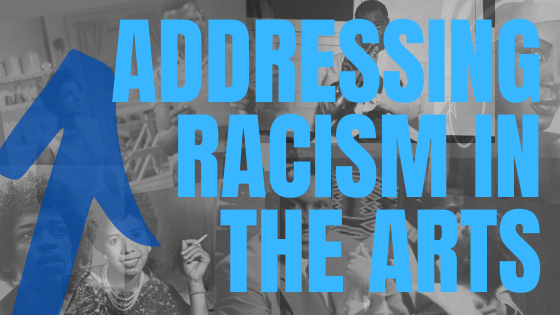Why The Race of Artists Shouldn’t Matter, But Does.


This week, a man named George Floyd was murdered by a police officer. My heart breaks for his family, but even more for the black community. The fear and uncertainty that they must feel knowing that those who are supposed to protect them may be the reason for their death is heartbreaking. After Floyd’s death, the Black Lives Matter Movement rose. I support them wholeheartedly. His killing was the result of centuries of racism and white supremacy, not just in the United States, but across the world. These prejudiced systems need to be dismantled.
Racism is present in every part of our daily lives, from business to politics to our entire social fabric. However, one thing that is not often spoken about is racial prejudice in the arts. In a prejudiced world, people refuse to accept and applaud the art of cultures other than their own. We have grown up in a society that tells us that “white is right” and that white culture is better. There is no way to deny the fact that people of color are underrepresented in this field. One can attempt to say that artists of color are “less talented,” or “not as accomplished” as other artists, but this is simply not true.
As a figure skater, I have seen the lack of black figure skaters in our sport. There have been a grand total of 1 black figure skater who has even earned a spot on the podium at the Olympics. What makes it even worse is the obvious evidence of discrimination in the sport; especially in the “aesthetic” that is often expressed of skaters (more like “the lighter the better”). Elements are scored based on their grade of execution (GOE), which grades their quality. Judges like a certain look in a skater, but the “look” of an athlete’s skating can change based on their skin color. This can lead to unconscious discrimination. It’s not because the quality, flow, or control of their skating is different than another skater’s is different, but it’s because it doesn’t fit the figure skating aesthetic. In art forms like dance, the issue is also largely recognized.
I don’t know if race made it more difficult, but definitely, it made me stronger, knowing that I [had] no excuse [for] making mistakes or being kind of so-so, because maybe I [wouldn’t] be accepted as a white person [would’ve been]. But if [I was] better, they had no choice but to accept it and say, ‘She did so well. ‘
Surya Bonaly
Black artists and culture have little to no representation in fine art museums either. If you don’t count their paintings and representations of slavery, their artwork is not displayed at all. Is that all they should be characterized as? Is their only representation in a museum a single painting that depicts their brothers and sisters being killed and enslaved? It is true that their art cannot be deemed better or worse than any other artist’s, regardless of race, but they are severely underrepresented. A recent study (Topaz et al. 2019) reviewed art in several major art museums in the US and found that only 1.2% of the art was produced by African-American creators. This standard is unacceptable.
Artists have attested to using skin-lightening creams to change their appearance. Indian actress Priyanka Chopra has admitted to using these products and has even starred in a commercial for them. But when did being lighter ever mean better? It has everything to do with the industry’s standards. If she is lighter, she’ll be more likely to get a role. If she’s lighter, she’ll get paid more. If she’s lighter, she will be better off. And that’s the issue. People of color have been forced to assimilate.
Let’s take a look at the film industry that Chopra works in. In 2019 Hollywood, 15.1% of the top films were directed by people of color (Hunt 2020). This means that only 1.5 of every 10 film directors were a minority. That’s a stark contrast to actual US demographics, in which 39.6% of people are minorities (U.S. Census Bureau 2019). The discrepancies are obvious. Why are those in power not representative of the actual population? And these same people in power are allowing prejudice to happen. By paying minorities less and refusing them lead roles, they are showing us how people in power can single-handedly support racism.
The first step to combatting racism and bigotry is acknowledging its presence in our society. In the arts field, we sometimes turn a blind eye to it. This is unfortunately the very reason we need to address it.
Works Cited
- Topaz, Chad M, et al. “Diversity of Artists in Major U.S. Museums.” PloS One, Public Library of Science, 20 Mar. 2019, www.ncbi.nlm.nih.gov/pmc/articles/PMC6426178/.
- Hunt, Dr. Darnell, and Dr. Ana-Christina Ramón. “Hollywood Diversity Report 2020.” socialsciences.ucla.edu, UCLA College of Social Sciences, 2020, socialsciences.ucla.edu/wp-content/uploads/2020/02/UCLA-Hollywood-Diversity-Report-2020-Film-2-6-2020.pdf
- “U.S. Census Bureau QuickFacts: United States.” Census Bureau QuickFacts, www.census.gov/quickfacts/fact/table/US/PST045219.


One Response
This is so important. Racism and colorism in the arts isn’t talked about enough